The bitterness of Ivorian cocoa
Join me on a visit to a cocoa plantation nestled in Côte d’Ivoire's interior, and learn about the ideas of an Ivorian PhD candidate to safeguard both the Ivorian environment and its cocoa economy.
As the world’s leading cocoa producer, Côte d’Ivoire supplies the lion’s share of the global market. The other way around, cocoa exports form a cornerstone of the Ivorian economy. And yet, this wealth does not trickle down to the farmers at the bottom of the chain. Many western chocolate giants turn a blind eye, while other European entrepreneurs claim they want to make a difference. But is the solution to be found in the West? Or should we lend our ears to the bright minds of Côte d’Ivoire?
Abidjan - The theatre in Abidjan—the de facto capital of Côte d’Ivoire—filled swiftly. Aside from the dozen or so European expats, many Ivorians settled into the seats of the Institut Français. On that night’s programme: a screening of a documentary about Dutch chocolate philanthropists. A fitting choice by the curator, for Côte d’Ivoire stands as the world’s foremost supplier of the key ingredient of chocolate.
The film followed the escapades of a jovial band of journalists investigating the existence of slavery within the African cocoa sector. Between jests and banter, the filmmakers delivered a sober message: slavery is far from a relic of the past, and many children are still forced to work on cocoa farms. Yet whether children helping their parents during school holidays also fall under the banner of ‘slavery’ remained an open question.
The well-intentioned ‘white chocolate’ film prompted raised eyebrows among the Ivorian audience. Particularly so when a Dutch journalist set foot on Burkinabe soil for the first time and spoke of the “mess” he encountered. A mess that he and his colleagues would “easily solve” if they had the chance. Even a few expats in the room squirmed with second-hand embarrassment. While wandering around, the reporter referred only to “Africa”—as though it were a single, small country locked in perpetual disorder. It was white saviorism in its purest form.
Before we embark on this journey through the Ivorian interior, I’d like to let you know that my book - Het continent van de toekomst (The Continent of the Future) - will hit the shelves in August. It is an atypical travel book (in Dutch, for now) about sixteen countries, seen through the eyes of Africans in their twenties and thirties. It is already available for pre-order here.
To better grasp the bitterness behind chocolate, I travelled to one of the countless cocoa plantations that turn much of Côte d’Ivoire’s landscape in lush green. A rugged four-by-four collected me from the roadside. After several hours on tarmac, we turned onto a narrow, muddy track. Leaves rustled against the windows on either side. I clung to the door handle as the vehicle groaned and creaked its way through the muck. On both sides, I watched farmers gathering yellow cocoa fruits freshly hacked from the trees by their colleagues wielding machetes. The heady scent of cocoa pulp hung thickly in the air, a sweet fog draped across the plantation. Hidden between the undergrowth, far from any sign of civilisation, stood two tiny houses on an open patch of land. Laundry flapped from the corrugated tin roofs.
The heat clung to me like a second skin. The oppressive climate was killing me. Afafa, a young woman living on the plantation with her four-year-old daughter, was used to it. She was preparing a meal for the men—who rise with the sun and return home at dusk.
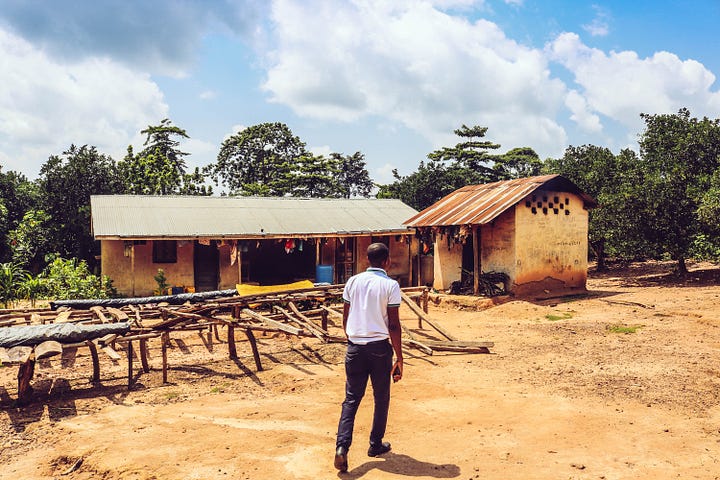
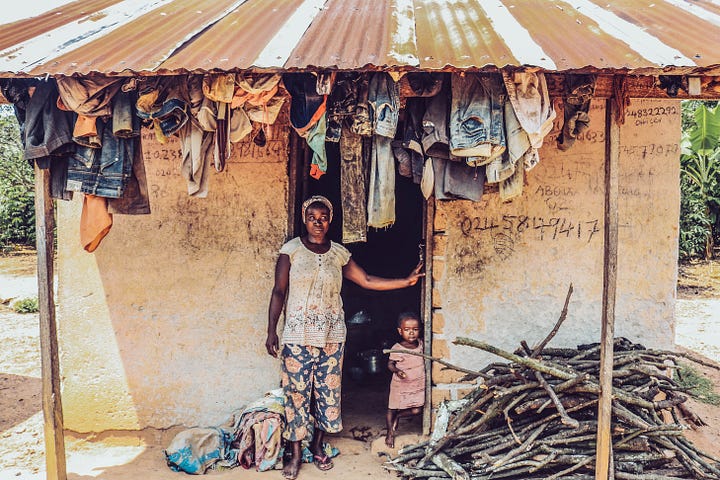
“It’s hard work,” said Cocoa Jean, driving his machete into the ground between our feet. His sweat-stained shirt hung almost to his knees. After dabbing his forehead, he picked up one of the cocoa fruits from a pile beside him and cracked it sharply against a tree trunk. With practiced ease, he split open the yellow shell and revealed a white, slimy string of beans. I was invited to taste one. The pleasing sweetness of the pulp was swiftly overridden by the sharp bitterness of the beans. Jean grinned and shook his head gently.
After the fruits are hacked open, the beans are separated from the pulp and spread onto a rickety drying rack. There, under the unforgiving equatorial sun, they roast for days before being packed into large sacks and hauled to a nearby depot.
At first glance, the plantation seemed almost idyllic. But the farmers, cut off from society, looked worn out. Their days were long, and essential services were far removed. A small solar panel provided some electricity, but there was no running water. If Jean were to injure himself with his machete, it would take him half a day to reach the nearest hospital. Afafa’s daughter did not attend school—there simply wasn’t one for miles. The prospect of a better life seemed painfully remote.
Severed from the wider world, they pass poverty down their family tree. It was sobering to witness this place—so isolated, so overlooked—and how it formed the very beginning of the supply chain for western luxury. A product the farmers themselves had likely never tasted.
At the same time, Jean expressed his concerns about the toll intensive cocoa farming was taking on his once-fertile soil. Yields were dwindling, and he feared for the plantation’s future. His worry echoed a nationwide crisis—one tied to rampant deforestation. Over the past decades, large parts of forest in Côte d’Ivoire have been consumed by agriculture. The shrinking biodiversity weakens the soil, making it ever harder to sustain the crops. Yet forest conservation remained politically fraught, for cocoa is too vital for the country’s economy.
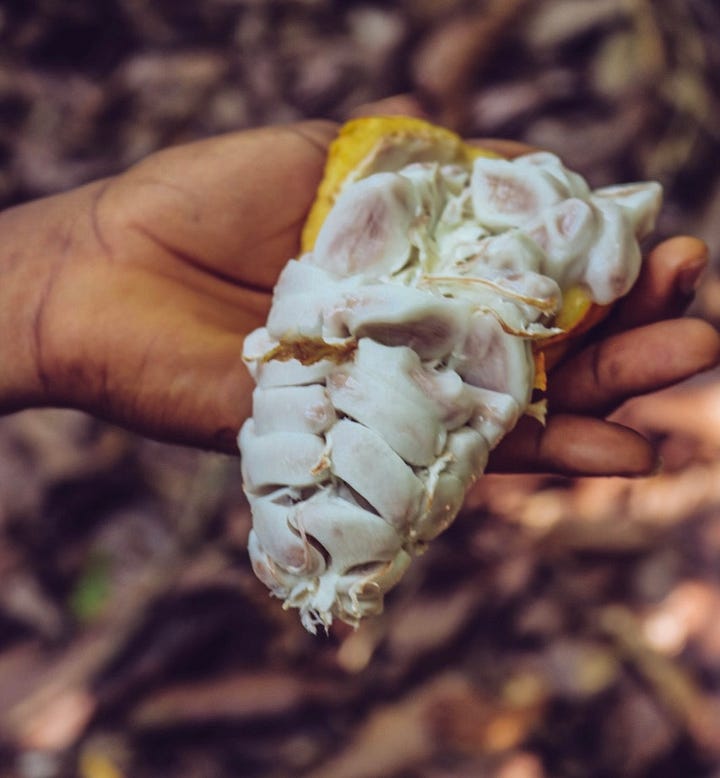
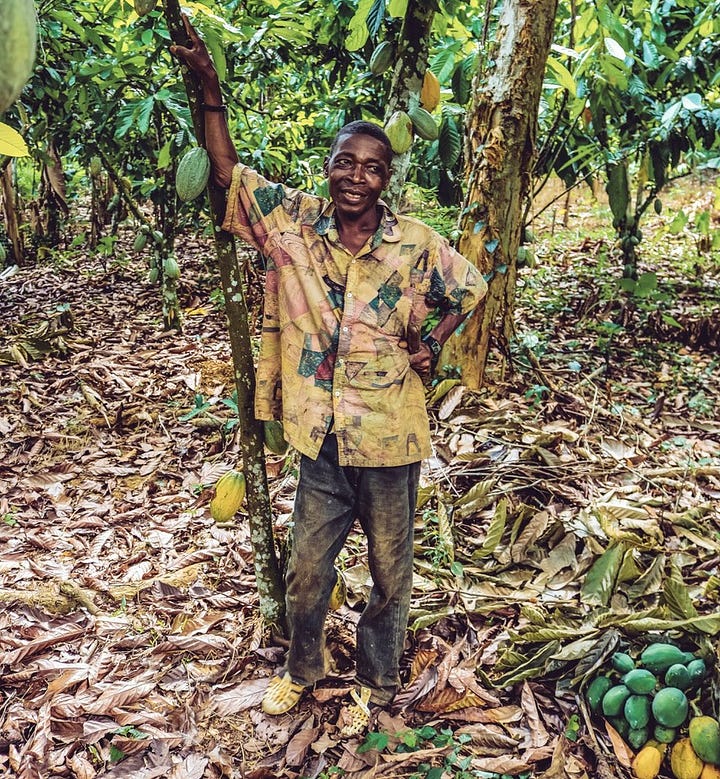
What remained was the pressing question of how Côte d’Ivoire might lift its cocoa sector out of crisis—both economically and ecologically—without depending on indifferent chocolate giants or well-meaning cocoa entrepreneurs.
“The cocoa sector is heading for inevitable trouble. At some point, the soil will be exhausted, and production will come to a standstill,” Djedje said. At the time, he was a PhD candidate in Food Technology at the Université d’Abobo-Adjamé in Abidjan. I met him in one of the improvised offices scattered across the university campus.
From his window, the view opened onto a wide green plain. Outside, students took turns dancing to music from a portable stereo, before retreating to the shade of a lone tree. It was a telling scene, given the country’s ongoing battle with deforestation. Djedje fit the image of a doctoral researcher: wearing a faded checked shirt, a small pair of glasses balanced on his nose. His research focused on reducing the agricultural sector’s dependence on cocoa. As part of that work, he regularly visited plantations to advise local farmers on how to preserve their soil.
I followed him to the office of his supervisor, Professor Soumaila. As we entered, the professor looked up from his paperwork with a start, hurriedly shuffled some folders aside, and wiped dust from the desk with his sleeve. Like Djedje, he was concerned about the direction of the cocoa industry.
Together, they were developing a strategy to protect Côte d’Ivoire’s ecosystem without pushing cocoa farmers further into precarity. They built on each other’s points with ease, frequently finishing each other’s sentences. Soumaila, in measured language, criticised the government's lack of regulation and called for structural reforms in the sector. The price of cocoa, he argued, must rise, and government tax revenues should be reinvested into farming communities. Djedje added that improving transport networks and modernising infrastructure could make a real difference. Better roads and logistics, he explained, would reduce post-harvest losses and boost efficiency.
Djedje’s goal was to stabilise the cocoa sector and offer farmers a viable future amid rising global demand for chocolate. That starts, he believes, with diversifying crops on plantations to protect the soil from being depleted. He fidgeted in his chair, scratched behind his ear and adjusted his glasses.
“That’s why I’m researching Safou,” he said, “a fruit that can grow alongside cocoa.”
He returned with two thick binders, the pages swollen and curled from the Ivorian humidity. Licking his fingers, he leafed through them until he found pictures of the fruit. Safou resembles the cocoa fruit in shape but is scientifically closer to the avocado. It’s rich in nutrients, packed with vitamins, and well suited to the tropical climate of West and Central Africa. I had never come across it before, but Djedje was confident that his Safou could help safeguard both the Ivorian environment and its cocoa economy — particularly if the fruit could find a foothold in Europe’s avocado-hungry markets.
While the chocolate multinationals aren’t bother by the problems that are caused by their craving for prosperity and Dutch journalists remain preoccupied with themselves, it might be wiser to pay closer attention to experts like Djedje and Coco Jean. They are deeply rooted in their countries and offer ground-level solutions to Ivorian challenges.
That’s all for now folks. I hope you’ll stick around and it would be greatly appreciated if you tell friends (to tell friends) about this publication. Feel free to drop me a line in case of any questions or suggestions and don’t forget to have a look at the amazing work of the African creatives I work with here.
Daaf - Writer, traveler and curator for The Bright Continent




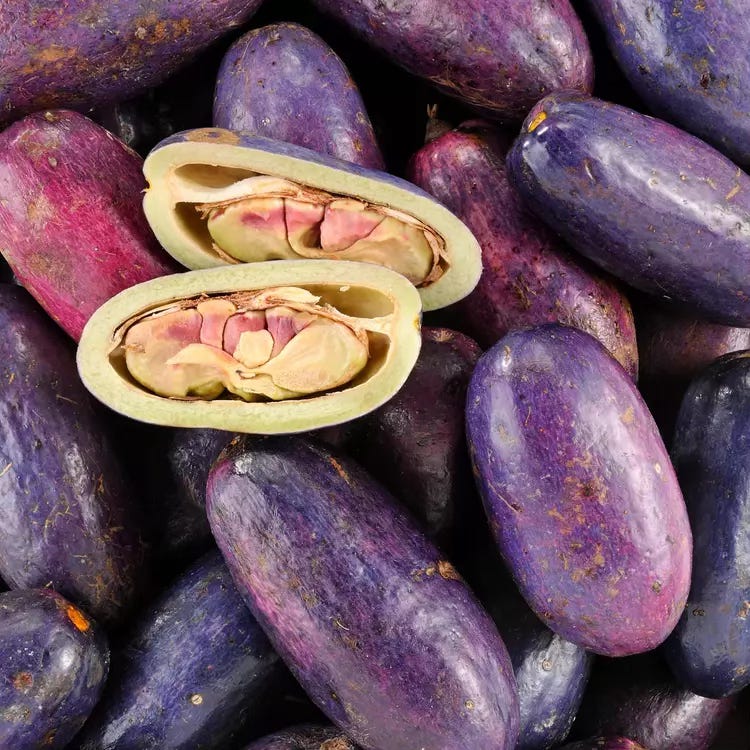
Sorry it’s taken me so long to read this! It’s a thought-provoking article. I’m not sure I can give up chocolate in its entirety, though maybe I should focus more on the Fairtrade varieties.
Thanks for highlighting this.